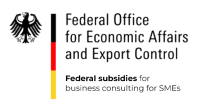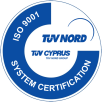The CLP Regulation
In the already highly complex world of chemicals legislation, this Regulation, which covers the classification, labeling and packaging of substances and mixtures (CLP), is one of the major pillars. . It is crucial for safe handling of chemicals and the protection of the users and the environment. The CLP Regulation is based on the so-called Globally Harmonized System GHS of the United Nations. It aims at minimizing the risks inherent in chemical substances by means of standardized warning labels. This Regulation is closely linked to the REACH Regulation, which covers the evaluation, restriction, registration, and authorization of chemicals. Together, they form a comprehensive system for the handling of chemicals in the EU.
If you want to know more about this, take a look at our previous blog posts: REACH Regulation part 1, REACH Regulation part 2, RoHS and REACH.
With the introduction of the CLP Regulation, companies face the challenge of correctly classifying and labeling their products in accordance with the Regulation. Now, what exactly does this mean for downstream users, manufacturers, and importers? Who is subject to these provisions, and what is the difference between products, substances, and mixtures? This will be explained in the following sections.
Who is affected by the CLP Regulation?
Basically, the CLP Regulation primarily affects the downstream users, manufacturers and importers responsible for putting chemical substances or mixtures into circulation in the EU. Consequently, they are responsible for correct classification, labeling and packaging of their products. They must mandatorily ensure that any hazard is appropriately communicated in order to protect users and consumers.
Distinction from the REACH Regulation
REACH and CLP are essential regulations in EU chemicals law that complement each other: While REACH ensures safe handling of chemical substances by way of their registration and evaluation, the CLP Regulation ensures standardized labeling and packaging of chemicals, based on the Globally Harmonized System of the UN. REACH deals with the way risks in connection with chemicals are are evaluated and monitored, while the CLP Regulation defines how such risks are communicated, in particular by way of pictographs and warning labels on the respective products. Both Regulations are intended to protect both health and the environment while ensuring that chemicals can safely be traded on the European Single Market. They provide a clear information basis for manufacturers and consumers.

Difference between product, substance and mixture pursuant to the REACH Regulation
In European chemicals law, in particular the REACH and CLP Regulations, it is important to distinguish product, substance and mixture because this is significant for the regulatory requirements in regard to the safety and putting into circulation of a product.
Products are items specifically shaped or designed for a certain function. Such items retain their shape during use. According to REACH, products are not usually subject to the CLP Regulation because the labeling depends on their shape and function, not on their chemical composition. However, they can contain hazardous substances that may entail special requirements.
Examples of products:
- With textiles, the shape as clothing is decisive, even though the chemical composition, e.g., the type of dyes used, may well require safety-relevant information.
- With adhesive tape, the adhesive property is achieved by way of the physical design. Even though adhesive tape contains chemical substances, it is considered to be a product.
- Packaging is used to protect and store products. The classification as product is due to its function, not its chemical composition.
Substances are chemical elements or compounds, either in their natural form or produced by some kind of production process. Substances may be subject to the CLP Regulation if they are used as such or in mixtures and may constitute a hazard, depending on their properties.
Examples of substances:
- Ethanol can be hazardous, depending on its concentration and use, and therefore subject to labeling obligations.
- Bisphenol A is a chemical compound used in many synthetic materials. Its potential effects on the user’s health make it particularly interesting.
- Petroleum is a naturally occurring liquid substance. It is used in various products, e.g., in gasoline or diesel, and can also be subject to the CLP Regulation.
A mixture consists of two or more substances that are mixed, but not chemically bonded. Depending on their composition and the properties of the components, mixtures may be subject to the CLP Regulation.
Examples of mixtures:
- Scented candles are made of waxes and fragrances. Their safety depends on the flame-retardant properties and the fragrances used.
- Wet wipes can contain detergents that may, depending on their chemical composition, cause them to be classified as hazardous.
- The ink in ballpoint pens is a mixture of dyes, solvents and other chemicals that may result in a classification as hazardous.
- Even though magnets are commonly products, the coating or finish of a magnet may be a mixture, which may in turn be subject to labeling requirements.

What decides if a substance or mixture is subject to the CLP Regulation?
The classification of substances and mixtures according to the CLP Regulation is closely linked to the safety data sheet, or SDS. This document is of vital importance for the identification of chemicals and the hazards they pose. It includes comprehensive safety instructions, and it has to be provided if…
- … a substance or mixture fulfills the criteria required to be classified as hazardous pursuant to the provisions of the CLP Regulation.
- … a substance is classified as persistent, bioaccumulative and toxic (PBT) or very persistent and very bioaccumulative (vPvB) in accordance with Annex XIII.
- … a substance has been included in the list of substances of very high concern (SVHC) according to Article 59(1).
The SDS has 16 sections containing specific information. Provision of an up-to-date SDS is a legal obligation and part of the risk management. A safety data sheet is also required if a mixture that is not classified as hazardous contains a hazardous substance in a concentration sufficient to cause health or safety risks. In such a case, an SDS is required to be made available upon request. Any modification of the composition or amendment of the legal framework requires a corresponding amendment of the SDS. Usually, the manufacturers and importers are responsible for compiling the SDS, although they are, of course, entitled to get assistance from a third party.
How can I, as a seller, obtain an SDS in accordance with the provisions?
Even as a seller, it is extremely important to have a safety data sheet for the substances and mixtures sold that complies with the statutory provisions. However, the structure and content of such a safety data sheet can be somewhat complex, depending on the manufacturer’s origin:
Due to the language barriers and the different legal framework, providing information in accordance with the EU regulations can be a serious challenge for manufacturers located in Asia. Consequently, sellers inevitably often have to have their own safety data sheets prepared. For this purpose, it is extremely important to have accurate information on the composition of the substance or mixture. Ideally, information such as the CAS Registry Number should be used to identify the composition. Asian manufacturers, however, often consider such information to be a “corporate secret”, and refuse to disclose it. As a result, obtaining compliant safety data sheets for substances or mixtures from Asia tends to be a challenge or altogether impossible.
Manufacturers in Europe, on the other hand, usually already have an up-to-date SDS in accordance with the EU regulations. If they do not, such an SDS can normally be drawn up without any trouble. Procuring substances or mixtures from European manufacturers is therefore usually much simpler and less complicated than it is with manufacturers located in Asia.
My product is subject to the CLP Regulation – now what?
If products are subject to the CLP Regulation, they must absolutely be labeled correctly. This includes placing pictographs, signal words and information on hazards and safety on the product label. The unique formula identifier, or UFI in short, is a key aspect. It allows for a quick, unambiguous identification of the product. You can generate such a UFI code here: UFI generator
Pursuant to the CLP Regulation, manufacturers and importers must mandatorily report classification and labeling information for the substances they are selling to the ECHA classification and labeling (C&L) inventory. The reporting obligations include the registration in the C&L inventory and, if necessary, reporting to the ECHA using the standardized Poison Centers Notification (PCN) format in order to inform poison centers accordingly.
We at Tradavo can help you
If you have questions or are uncertain about the CLP Regulation and its requirements, Tradavo is happy to help you. Our experts provide comprehensive assistance, including SDS review, communication with the manufacturer, correct labeling, and assistance with reporting and registrations for downstream users. We are a reliable partner to you, helping you to make sure that your products comply with the statutory requirements. Please contact us for help!
You need assistance?
It is best to book an appointment directly for a free initial consultation.
Who wrote this article?
As an author, Christina fills the blog section of our website with exciting and informative articles, so that our readers can always take care of product compliance in their company in the most well-informed way.
- Christinahttps://compliance.tradavo.eu/en/author/epywxge/
- Christinahttps://compliance.tradavo.eu/en/author/epywxge/
- Christinahttps://compliance.tradavo.eu/en/author/epywxge/
- Christinahttps://compliance.tradavo.eu/en/author/epywxge/







